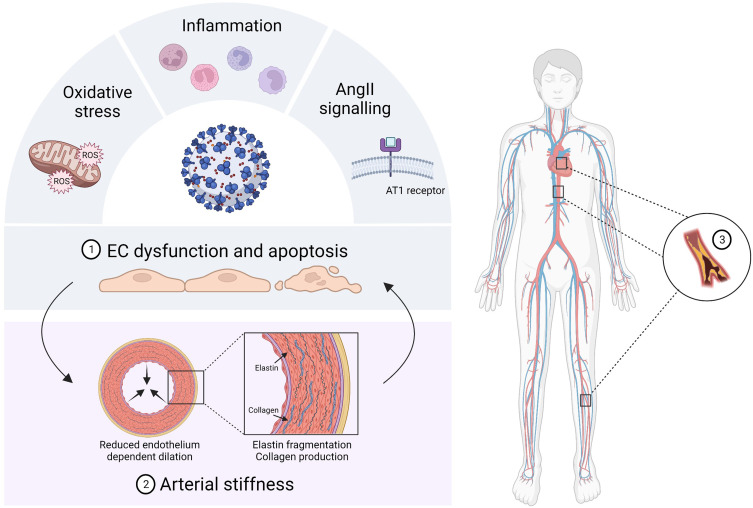Figure 2.
Overview of COVID-19 related vascular complications. SARS-CoV-2 infection gives rise to enhanced oxidative stress, inflammation and angiotensin II (AngII)-angiotensin II type 1 (AT1) receptor signalling, which ultimately leads to endothelial cell (EC) dysfunction and apoptotic cell death (1). An important consequence of EC dysfunction is the development of arterial stiffness due to impaired nitric oxide bioavailability. Also remodelling of the extracellular matrix, leading to a lower elastin/collagen ratio, contributes to arterial stiffness development (2). The increase in vascular stiffness can further damage ECs, thereby resulting in a vicious cycle. Eventually these pathophysiological mechanisms can drive the development of atherosclerosis, peripheral and coronary artery disease (3). (Created with BioRender.com).

